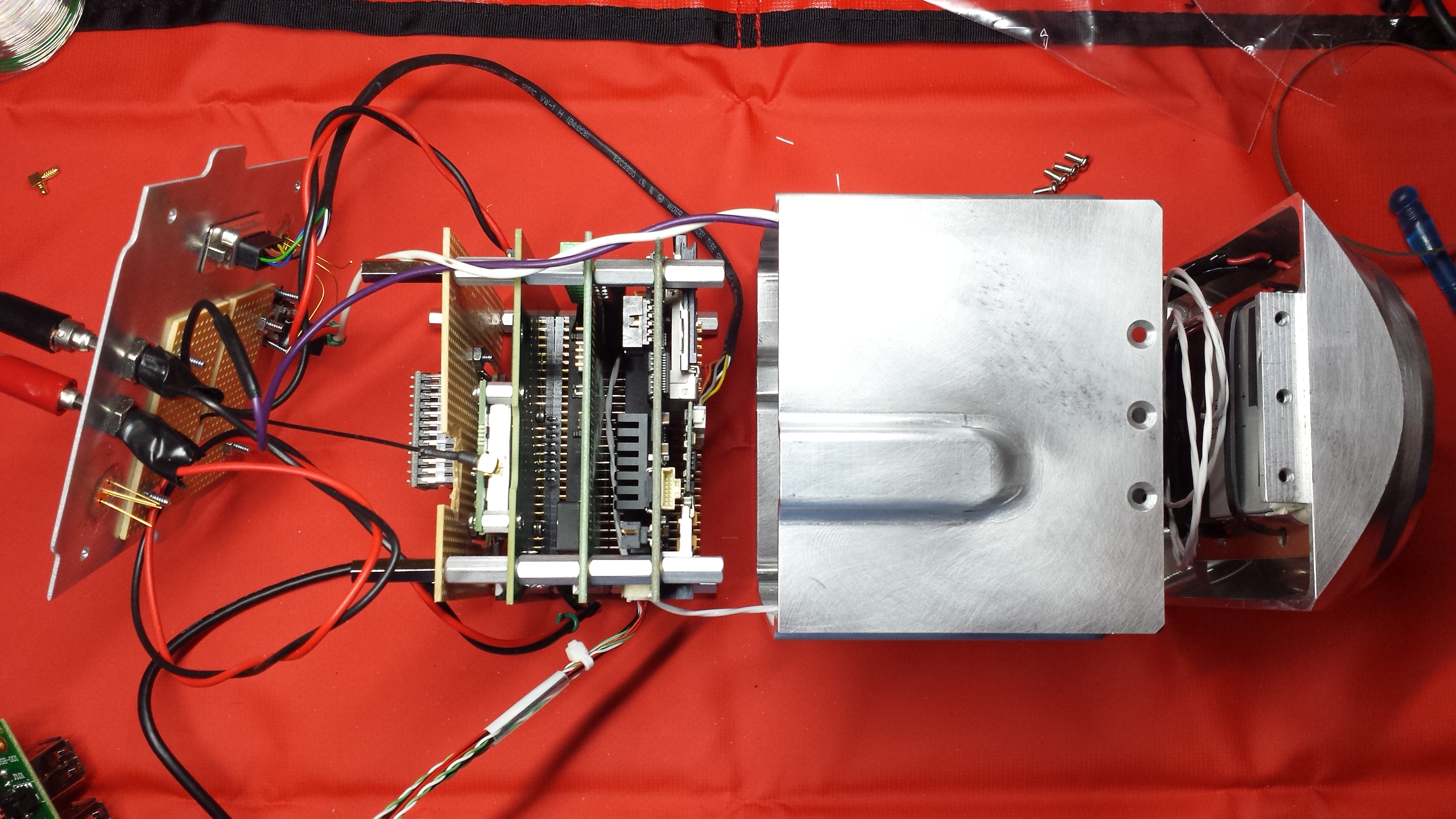Although scientists are increasingly using pint-size satellites sometimes no larger than a loaf of bread to gather data from low-Earth orbit, they have yet to apply the less-expensive small-satellite technology to observe physical phenomena far from terra firma.
Jaime Esper, a technologist at NASA’s Goddard Space Flight Center in Greenbelt, Maryland, however, is advancing a CubeSat concept that would give scientists that capability.
Dubbed the CubeSat Application for Planetary Entry Missions (CAPE), the concept involves the development of two modules: a service module that would propel the spacecraft to its celestial target and a separate planetary entry probe that could survive a rapid dive through the atmosphere of an extraterrestrial planet, all while reliably transmitting scientific and engineering data.
Esper and his team are planning to test the stability of a prototype entry vehicle —the Micro-Reentry Capsule (MIRCA) — this summer during a high-altitude balloon mission from Fort Sumner, New Mexico.
‘Like No Other CubeSat Mission’
“The CAPE/MIRCA concept is like no other CubeSat mission,” Esper said. “It goes the extra step in delivering a complete spacecraft for carrying out scientific investigations. We are the only researchers working on a concept like this.”
Under his concept, the CAPE/MIRCA spacecraft, including the service module and entry probe, would weigh less than 11 pounds (4.9 kilograms) and measure no more than 4 inches (10.1 centimeters) on a side. After being ejected from a canister housed by its mother ship, the tiny spacecraft would unfurl its miniaturized solar panels or operate on internal battery power to begin its journey to another planetary body.
Once it reached its destination, the sensor-loaded entry vehicle would separate from its service module and begin its descent through the target’s atmosphere. It would communicate atmospheric pressure, temperature, and composition data to the mother ship, which then would transmit the information back to Earth.
The beauty of CubeSats is their versatility. Because they are relatively inexpensive to build and deploy, scientists could conceivably launch multiple spacecraft for multi-point sampling — a capability currently not available with single planetary probes that are the NASA norm today. Esper would equip the MIRCA craft with accelerometers, gyros, thermal and pressure sensors, and radiometers, which measure specific gases; however, scientists could tailor the instrument package depending on the targets, Esper said.
Balloon Flight to Test Stability
The first step in realizing the concept is demonstrating a prototype of the MIRCA design during a balloon mission this summer. According to the plan, the capsule, manufactured at NASA’s Wallops Flight Facility on Virginia’s Eastern Shore, would be dropped from the balloon gondola at an altitude of about 18.6 miles (30 kilometers) to test the design’s aerodynamic stability and operational concept. During its free fall, MIRCA is expected to reach speeds of up to Mach 1, roughly the speed of sound.
“If I can demonstrate the entry vehicle, I then could attract potential partners to provide the rest of the vehicle,” Esper said, referring to the service module, including propulsion and attitude-control subsystems. He added that the concept might be particularly attractive to universities and researchers with limited resources.
In addition to the balloon flight, Esper said he would like to drop the entry vehicle from the International Space Station perhaps as early as 2016 — a test that would expose the capsule to spaceflight and reentry heating conditions and further advance its technology-readiness level.
“The balloon drop of MIRCA will in itself mark the first time a CubeSat planetary entry capsule is flight tested, not only at Goddard, but anywhere else in the world,” he said. “That in turn enables new opportunities in planetary exploration not available to date, and represents a game-changing opportunity for Goddard.”
For more technology news, go to: http://gsfctechnology.gsfc.nasa.gov/newsletter/Current.pdf



























